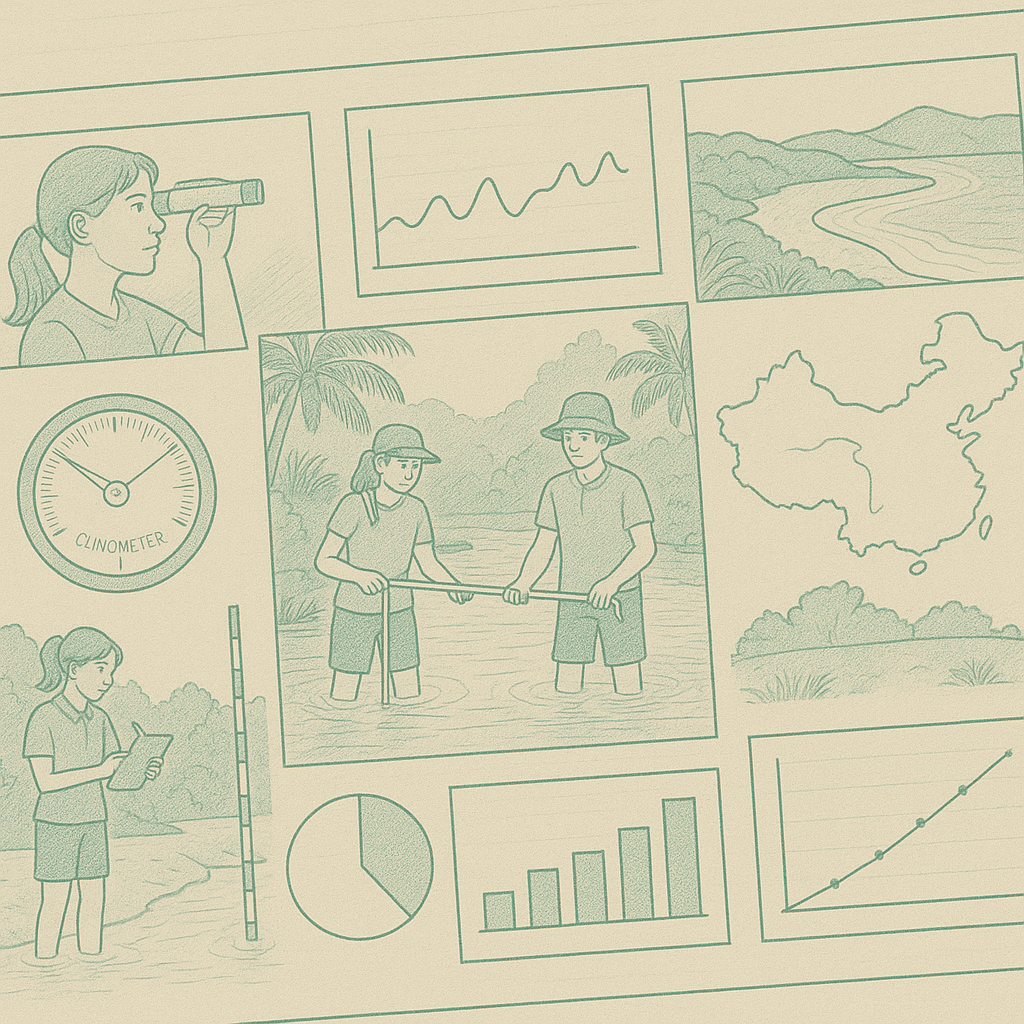Paper 4 might sound like fake fieldwork — but don’t be fooled. The examiners aren’t looking for who’s been on the most school trips. They want to see how you think like a human geographer: can you plan a sensible method, present your data clearly, and say something meaningful about the world around you? Whether you’re mapping traffic, studying tourism, or analysing land use, this guide will help you go from vague ideas to confident, exam-ready answers.
🏙️ Urban Environments: Cities Under the Microscope
Common Questions:
- How does land use change from the CBD to the suburbs?
- What is the environmental quality like in different zones?
Step-by-Step:
- Hypothesis Example:
“Environmental quality improves as you move away from the CBD.” - Data Collection:
- Use a land use map and mark different zones (residential, retail, etc.).
- Fill in an EQS survey (score from 1–5 for noise, litter, greenery). . Field Studies Council – Environmental Quality Surveys
- Record traffic counts at set times. IGCSE GEOGRAPHY – PAPER 4 – PEDESTRIAN & TRAFFIC COUNT
- Use a land use map and mark different zones (residential, retail, etc.).
6 Traffic Counts and Classification Study Methods – SMATS
Fieldwork Methods (Edexcel GCSE)
- Data Presentation:
- Choropleth map of EQS scores
- Bar graph comparing land use percentages.
- Line graph for traffic patterns throughout the day.
- Choropleth map of EQS scores
- Analysis:
- Is there a clear drop in noise/litter away from the centre?
- Link changes in EQS to urban models (like Burgess or Hoyt).
- Is there a clear drop in noise/litter away from the centre?
- Evaluation:
- Was your EQS subjective?
- Were all surveys done at the same time?
- Was your EQS subjective?
💡 Top Tip for A:* Compare your findings to the urban land use models and identify anomalies (e.g., gentrified inner city).
🧳 Tourism: Understanding the Impacts
Common Questions:
- What are the environmental and social effects of tourism?
- Are current management strategies effective?
Step-by-Step:
- Hypothesis Example:
“Tourist areas have higher litter and noise levels than non-tourist zones.” - Data Collection:
- Use a visitor survey (age, origin, purpose, spending).
- Conduct an EQS of tourist hotspots vs quiet zones. . Field Studies Council – Environmental Quality Surveys
- Interview locals or staff about tourism impacts.
- Use a visitor survey (age, origin, purpose, spending).
- Data Presentation:
- Pie charts of visitor types.
- Bar graphs for EQS comparisons.
- Annotated photos of crowded vs quiet areas.
- Pie charts of visitor types.
- Analysis:
- Are tourists clustered in certain areas?
- Are locals satisfied with tourism management?
- Are tourists clustered in certain areas?
- Evaluation:
- How honest were survey responses?
- Were the tourist numbers typical for that season?
- How honest were survey responses?
💡 Top Tip for A:* Link your findings to the Butler Model of tourist area evolution. Butler’s life cycle model – Changing pattern and nature of tourism – Eduqas – GCSE Geography Revision
🌍 Population & Migration / Land Use
Key Questions:
- How does population density vary?
- What are the causes and impacts of rural-urban migration?
- How is land use changing in the rural-urban fringe?
Planning Suggestions:
- Use questionnaires, GIS mapping, and land use classification surveys.
- Analyse push-pull factors using real interviews or local data.
- Map land use changes over time using secondary data.
💡 Top Tip for A:* Use specific terminology like counterurbanisation, urban sprawl, and socio-economic zones in your evaluation.
🧠 General Fieldwork Tips for Human Geography
Fairness:
- Randomly select survey participants (e.g., every 5th person).
- Repeat EQS at different times of day.
- Use clear, consistent rating systems.
Safety:
- Stay in well-populated areas.
- Work in small teams.
- Be respectful when conducting surveys.
Don’t Forget:
- Always justify why your methods were chosen.
- Link every conclusion back to a clear hypothesis.
- Acknowledge limitations and how they could be fixed next time.
For more general support, take a look at Top Tips for IGCSE Geography Paper 4: Alternative to Coursework (0460)



